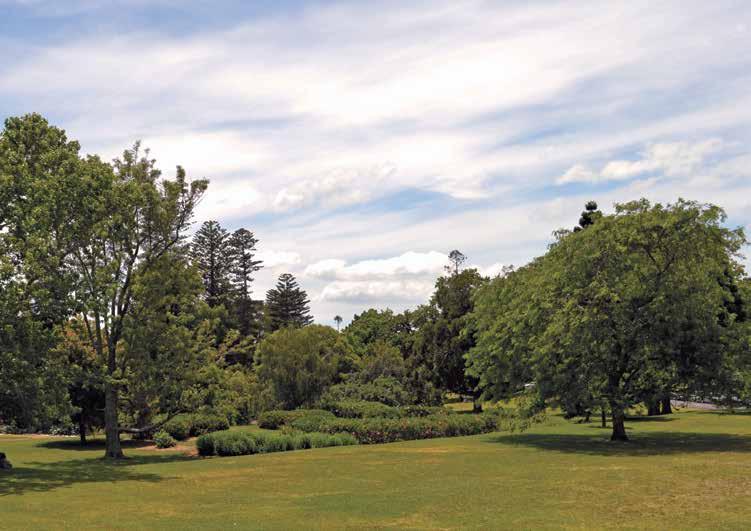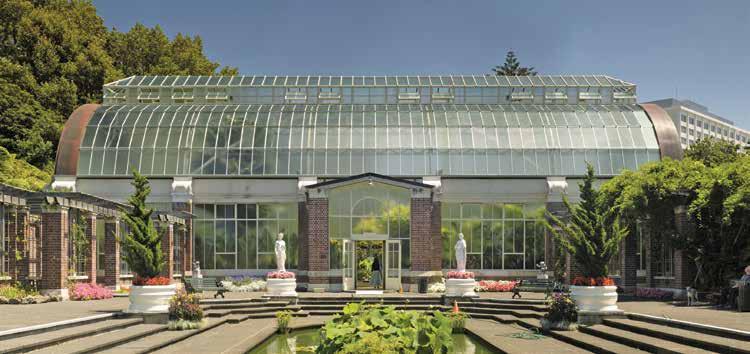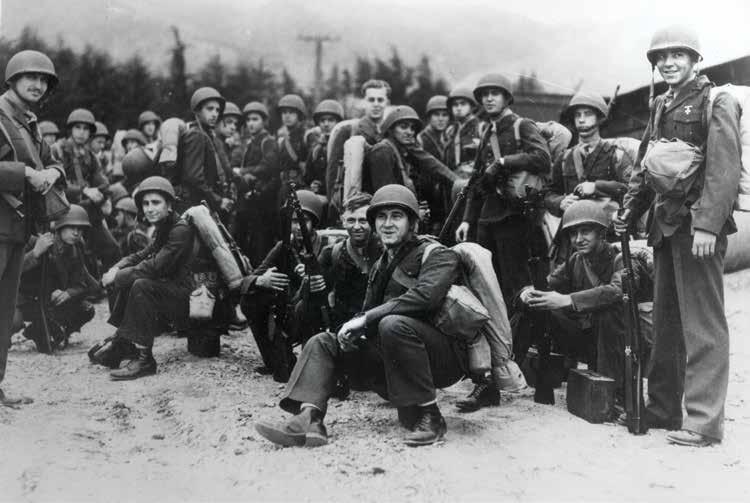
4 minute read
Great green oasis
SOMETIMES YOU JUST HAVE TO SLOW DOWN and smell the roses. And in the hustle and bustle of our largest city, there is no better place to do it than the Auckland Domain.
New York may have Central Park, and London has Hyde Park – but they are no match for the Domain.
Advertisement
Hindsight is a wonderful thing, but looking back on the founding of Auckland you can’t help but think they got a few things right. Way back in the 1800s the 80 hectare plot of land that would become Auckland Domain was set aside as public reserve, and it remains today a great green oasis. Some call it Auckland’s lungs, to others it is a fantastic place for a walk, for wedding photos, for a family day out, or to, well, just go fly a kite.

The Domain is actually the crater of a volcano – Pukekawa – that last rumbled to life some 140,000 years ago. Auckland War Memorial Museum The Domain is actually the crater of a volcano – Pukekawa – that last rumbled to life some 140,000 years ago. The crater left behind filled with sediment and became a swampy lake providing Māori with a source of eels and spring water. On the hill where the Auckland Museum now stands a pā – Pukekaroa – was built, and before he became the first Māori King in 1858 Pōtatau Te Wherowhero lived in a cottage on the Domain provided by Governor George Grey as a mark of respect to the Waikato warrior. It was also there that Te Wherowhero and his great Ngāpuhi adversary Hongi Hika made peace in 1828, and the name Pukekawa, or ‘sour hill’ (supposedly because kūmara would not grow there) was extended by Te Wherowhero to mean ‘hill of bitter memories’ in relation to the bitter tribal conflicts it had witnessed. It is a fitting name for what is now the location of the Auckland War Memorial Museum.


Tropical hot house of the Wintergardens
In the 1860s the same springs that fed the lake provided water to the growing town of Auckland, and soon after that the swamp was drained and turned into cricket grounds. At one stage the Domain was considered as a site for the new Government House, but thankfully those plans stalled and instead the land was planted in all manner of native and exotic plant species and became something of a testing ground for the Auckland Acclimatisation Society. But it also grew into a focal point for sports events and shows, essentially acting as Auckland’s front yard, the place to hold any event of substance.

The opening ceremony of the Auckland Exhibition, Auckland Domain, 4 December 1913.
Alexander Turnbull Library.
These ranged from the 1913 Auckland Exhibition (which also saw the Wintergardens created) to cricket matches, the first rugby league test match in the country (we lost to Great Britain, but many blamed the ref) and newsworthy spectacles like pioneering balloon ascents and royal visits. During the 1937 Farmers’ Christmas parade the Domain nearly became news for all the wrong reasons when a cunning plan to have Santa descend by parachute went awry as the hapless Father Christmas was caught by a gust of wind, narrowly missed smashing into the glass roof of the Wintergardens, and instead crashed to earth between two hothouses, almost hitting a couple of gardeners for good measure.
Farmers’ Trading Company manager Robert Laidlaw is reported to have been mortified at the thought of being the first man to kill Santa, but thankfully all was well; a shaken Mr Claus adjusted his beard and began distributing presents to the assembled children, who no doubt found the whole episode highly entertaining.
But on a sunny day in the City of Sails, who needs parachuting Santas? The spring that fed the swamp and then the town that became the city now feeds a pond populated by ducks, and the trees and shrubs planted all those years ago have matured into some truly stunning walks. It’s easy to forget that just minutes from downtown Auckland you can still stroll through lush bush at the Domain, with mānuka and nīkau, or along paths that could be from Victorian times. The Wintergardens still look just as stunning as they did in 1913 when their steel and glass design was cutting edge technology and their designer, William Gummer, was one of the country’s leading architects. And the Wintergarden Café, together with the nearby kiosk (another survivor from the 1913 Auckland Exhibition) is not just the perfect place for coffee and a bite in the Domain, but a great destination to escape the city when it all gets a bit too much.

Summer, winter, spring autumn; the colours change, but the Domain remains the great oasis in the heart of Auckland.








